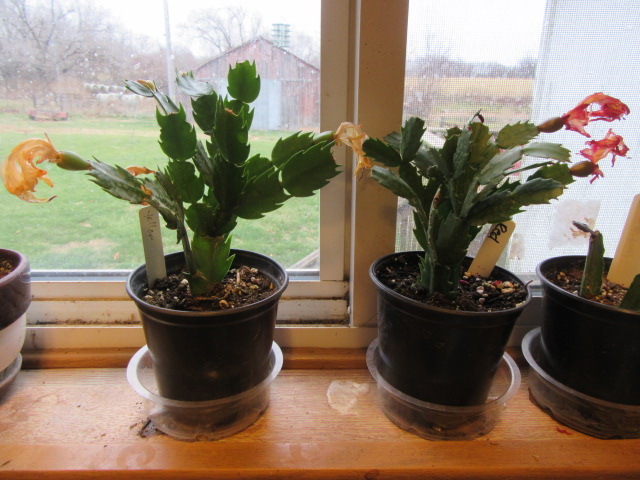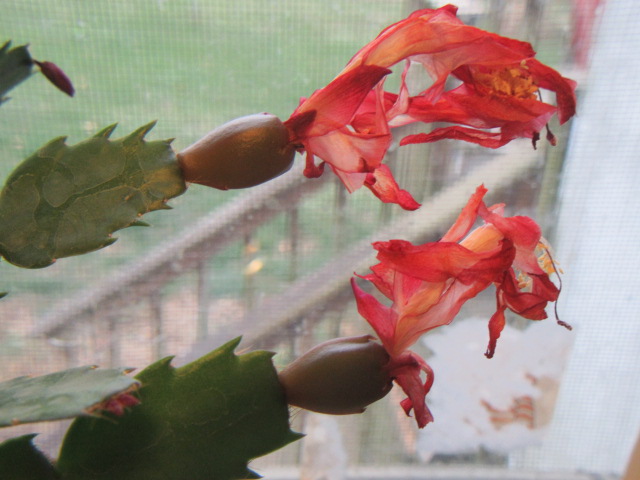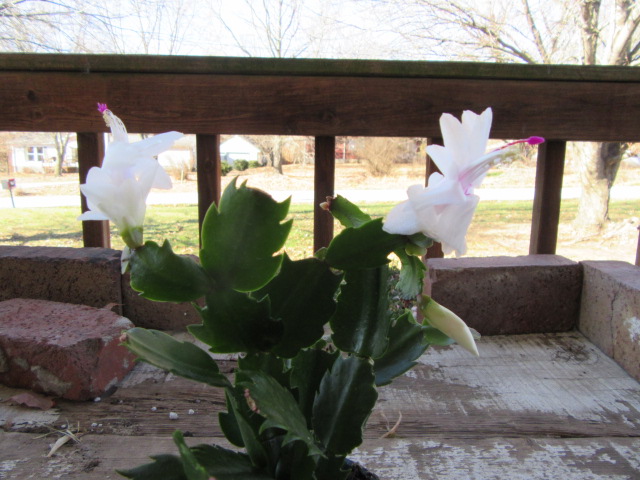
Schlumbergera truncata (Holiday Cactus) on 12-11-21 outside for a photoshoot.
Hello everyone! I hope this post finds you well. Late in November, the local Dollar General had two displays of Schlumbergera truncata (Holiday Cactus). I tried my best not to look at them but one day I finally gave in… Their buds were very small at the time but I noticed the end of their segments had A LOT of buds. Day by day, their buds were getting bigger and I wondered if there were any colors I didn’t have. The problem was, every day their numbers were decreasing. Once the buds grew larger, I spotted one that looked like it might have white flowers. I brought it home on November 30…
On December 11, the flowers had opened enough to get some good photos. For sure, it has white flowers…
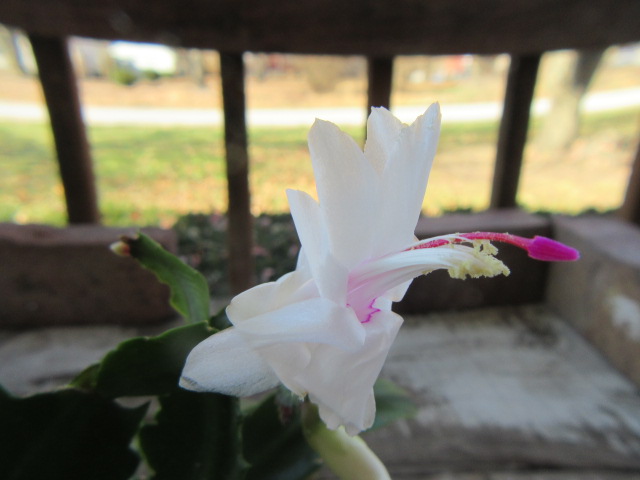
Schlumbergera truncata (Holiday Cactus) on 12-11-21.
The lower petals were really reflexed…
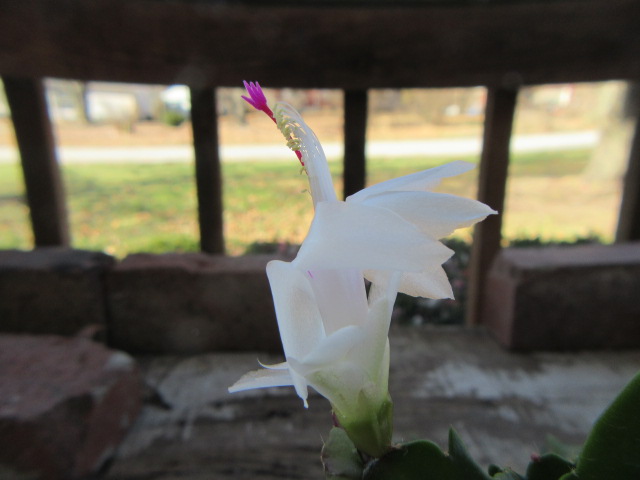
Schlumbergera truncata (Holiday Cactus) on 12-11-21.
I think the flower will get longer after a few days…
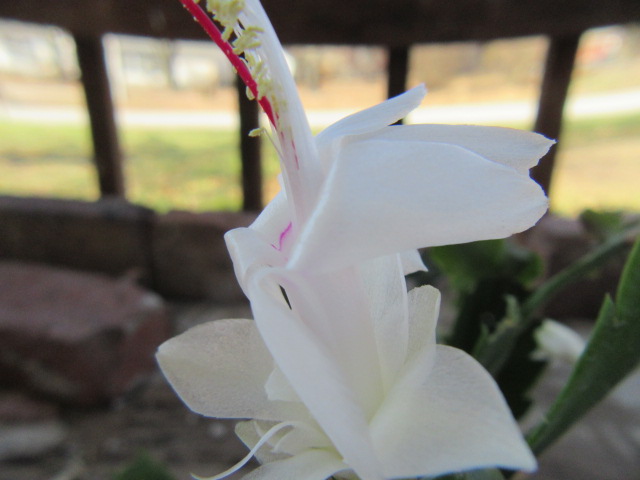
Schlumbergera truncata (Holiday Cactus) on 12-11-21.
Schlumbergera truncata have very interesting flowers and this time of the year they “should be” budding and blooming.
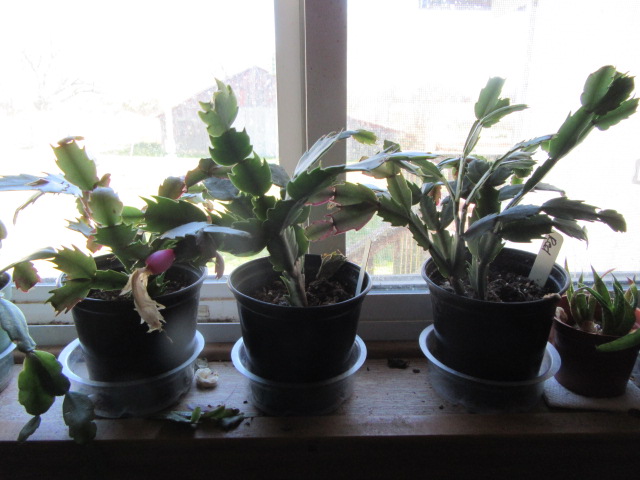
Schlumbergera truncata (Holiday Cactus) on 11-18-21.
I had kept all the Schlumbergera truncata in the kitchen windowsill all summer except for one which was on the front porch. When I moved the plants inside for the winter, I put the one that was on the front porch on the plant shelf in front of the sliding door in the dining room… They have lost a lot of segments lately and seem to be wanting A LOT of water… How much is too much this time of the year? Most cactus and succulents don’t need water now, but these are in active growth.
Remember last year I hand-pollinated the two plants that produced fruit? Three of them fell off a few months ago and one hung on until a few days ago.
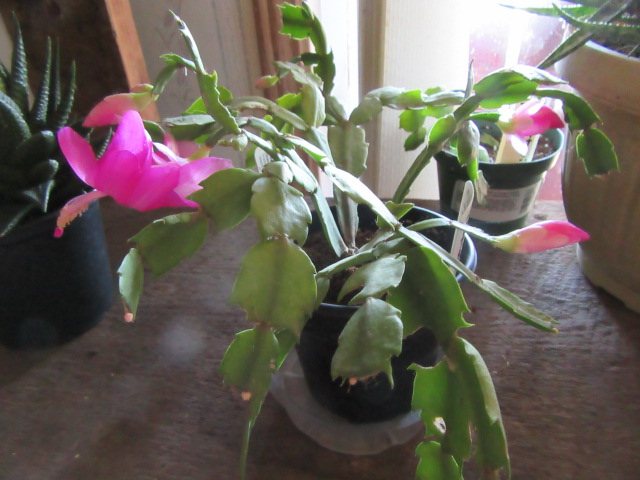
Schlumbergera truncata (Holiday Cactus) on 11-18-21, #856-1.
Hmmm… The one on the shelf bloomed while the plants in the windowsill did nothing. The plants on the windowsill have had plenty of light which decreased as the day length decreased. The one on the shelf had more light on the front porch which decreased when I brought it inside. Then, when we had sunny days, it triggered it to bloom…
Last year, the plant with yellow (cream) flowers bloomed in November then again in February. It all has to do with light and you can force them to bloom just about any time of the year. SO, I moved the Schlumbergera truncata on the windowsill to the shelf and the one from the shelf next to the new one on the windowsill.
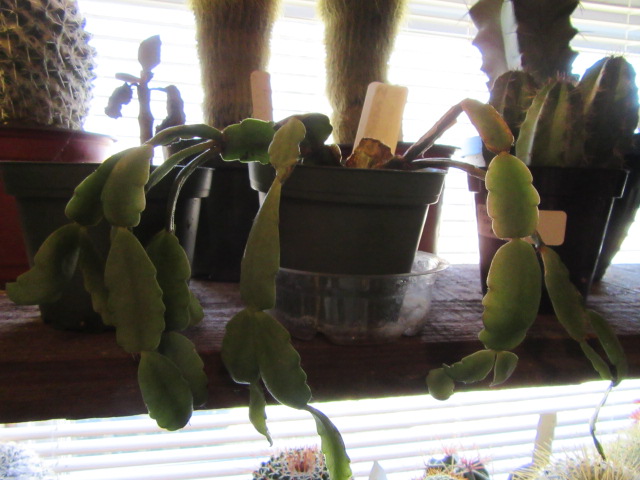
Schlumbergera russelliana (Christmas Cactus) on 12-12-21.
Then I moved the Schlumbergera russelliana (Christmas Cactus) to my bedroom in lower light. Ummm… It had been on the windowsill… The Schlumbergera russelliana is doing well but it looks like it needs fertilizer because its leaves are looking pale. It is naturally a drooper.
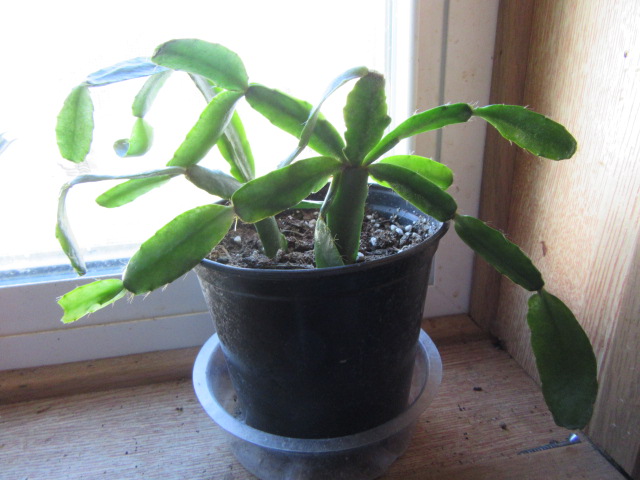
Rhipsalidopsis gaertneri (Easter Cactus) on 12-12-21.
I have been updating the plant pages and when I came to the Schlumbergera gaertneri (Easter Cactus) page I was shocked to find out its name changed AGAIN! When I brought it home last November I found out the name had changed from Hatiora gaertneri to Schlumbergera gaertneri. Now it is Rhipsalidopsis gaertneri… Back to the name it was given in 1942… This one isn’t supposed to bloom until Easter. Other than having a name issue, it is doing well. Personally, I think it knows what its real name is but it likes keeping botanists guessing. It has 10 synonyms… Well, that isn’t too bad. Schlumbergera truncata has 19 and S. russelliana has only 5.
I am still updating pages and have about 70 more to go. Then I have to go back to the top of the list and update a few things that evolved during the process. Plants of the World Online has been in the process of updating its maps and adding names from the International Plant Names Index that weren’t on POWO. Adding names from IPNI seems to be a workout for them and has changed infraspecific names and A LOT of synonyms. It has affected quite a few of my plant pages so I have to keep going back to see if updates have been made on POWO so I can update my plant pages properly. The number of species has increased for several genera and even several new genera in some families. Kew is always on the ball…
I have some ideas mulling around for a few posts, but for now, I need to get the updates finished. I am still alive and well. 🙂
Until next time, be safe, stay positive, and get as dirty as you can when you can. Don’t forget to always be thankful… Give someone a hug, but be careful who you hug. You may get slapped. 🙂
